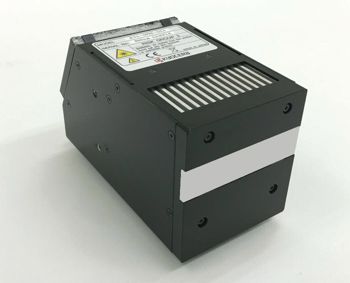Air-cooled UV curing light supports UV ink printing

Kyocera Corporation has developed an air-cooled UV-LED curing light that is ideal for use in industrial ultraviolet (UV) ink applications including billboard printing, as well as UV-cured coating and adhesive processes.
Kyocera’s proprietary technology results in one of the highest UV intensity (24W/cm2) among air-cooled curing lights for UV printing. This product sets a new industry standard by offering the highest performance in a package that is said to be the world’s lightest and smallest at about half the size of a conventional aircooled UV curing light offering high UV intensity (16W/cm2).
The G5A Series incorporates Kyocera’s proprietary ceramic substrate with excellent heat conductivity in a heatradiating modular design, which allows LED elements to be mounted at an exceptionally high density.
Since it employs an integrated air-cooling system that eliminates the need for supplemental liquid cooling equipment, it can help reduce total equipment costs while saving space. Furthermore, its scalable structure allows users to adjust irradiation width, enabling full design optimisation to suit a wide range of applications and printing media.
Demand for high speed UV printing is rising especially among wide-format inkjet billboard-printing, coating and adhesive applications. Design requirements increasingly specify an air-cooled UV light with high output for higher productivity. Kyocera’s G5A system can achieve 350mJ/cm2 (50m/min) of accumulated light, thus enabling high speed curing.
The G5A Series requires less space and is the industry’s most lightweight system as it employs its own air-cooling technology with no additional equipment. Accordingly, the air-cooled UV-LED curing light reduces initial equipment investment costs. The world’s smallest size (80.3×88.0×150.5 mm) and lightest weight (950g) contribute to space savings for the overall system.
A monitoring system allows users to track irradiation conditions including LED temperature and current, fan operating time and accumulated irradiation time, via serial communications; it notifies the user when it’s time to replace filters or if abnormalities are detected, ensuring stable operation and optimal performance.
